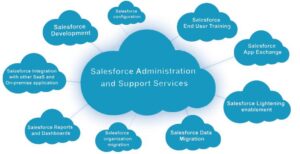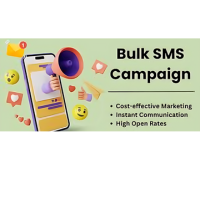
The Complete Guide to Data Management Platform: Everything You Need to Know
Introduction to Data Management Platform
In today’s digital era, businesses are generating massive amounts of data from various channels such as websites, social media, mobile apps, CRM systems, and offline transactions. Managing and organizing this vast amount of information effectively has become a critical challenge. This is where a Data Management Platform (DMP) comes into play. A DMP is a centralized technology platform that collects, stores, and analyzes data from multiple sources to help organizations make data-driven decisions. It empowers businesses to understand their customers better, personalize marketing efforts, and improve operational efficiency.
What is a Data Management Platform?
A data management platform is essentially a system designed to gather, organize, and activate data from first-party, second-party, and third-party sources. It acts as a single source of truth where businesses can store raw data, process it into usable formats, and apply it across different business functions. Companies use DMPs to gain insights into customer behavior, create audience segments, and improve customer experience.
For example, if a retail company collects user data from online purchases, mobile app interactions, and loyalty programs, a DMP can integrate this information into one central dashboard. This unified view allows marketers to target customers with relevant product recommendations and ads.
Key Features of a Data Management Platform
A powerful DMP offers various features that make it indispensable for modern organizations:
1. Data Collection and Integration
The foundation of any data management platform lies in its ability to gather data from multiple sources. A DMP can capture information from:
-
Customer Relationship Management (CRM) systems
-
Social media platforms
-
Website analytics tools
-
E-commerce transactions
-
Mobile applications
-
Third-party data providers
2. Audience Segmentation
One of the most valuable functions of a DMP is segmentation. Businesses can divide customers into groups based on demographics, location, online behavior, or purchase history. This allows marketers to deliver highly targeted campaigns rather than generic promotions.
3. Real-Time Data Processing
Modern businesses cannot afford to work with outdated information. A strong DMP processes data in real-time, allowing instant decision-making. For example, if a customer abandons a shopping cart, the DMP can trigger an immediate remarketing campaign.
4. Data Activation
Collecting data is only the first step. A DMP ensures that this data can be activated across different channels such as email marketing, digital ads, social media campaigns, and personalization engines.
5. Privacy and Security Compliance
With strict regulations like GDPR and CCPA, maintaining customer trust is critical. A reliable data management platform ensures compliance with global data protection standards while giving customers control over their data.
Benefits of Using a Data Management Platform
Implementing a data management platform provides businesses with multiple advantages that directly impact their growth and customer relationships.
Improved Customer Understanding
By integrating data from different sources, businesses can create a 360-degree view of their customers. This helps in understanding preferences, buying behavior, and future needs.
Better Marketing ROI
Targeted campaigns powered by accurate audience insights reduce wasted ad spend and increase conversion rates. A DMP ensures that marketing budgets are allocated to the right channels and audiences.
Personalization at Scale
Today’s consumers expect personalized experiences. A DMP allows companies to deliver tailored content, offers, and product recommendations to each customer segment, increasing engagement and loyalty.
Enhanced Data-Driven Decision Making
Business leaders can use insights from a data management platform to identify trends, predict demand, and optimize strategies. This shifts decision-making from guesswork to data-backed strategies.
Cross-Channel Consistency
A DMP ensures that the customer receives consistent messages across all touchpoints—whether it’s a website, mobile app, social media, or email campaign. This strengthens brand identity and customer trust.
Types of Data in a Data Management Platform
To fully understand the working of a DMP, it’s important to explore the types of data it manages:
First-Party Data
This is the data collected directly from your customers through owned platforms such as websites, apps, CRM, and loyalty programs. It is the most valuable type of data because it comes directly from interactions with your brand.
Second-Party Data
This is essentially another company’s first-party data that is shared with you through a partnership. For example, a hotel chain might share customer data with an airline to offer joint promotions.
Third-Party Data
This data is purchased from external providers and usually includes broader demographic or behavioral information. While it helps expand reach, it may not always be as accurate as first-party data.
Use Cases of Data Management Platforms
DMPs are versatile and can be applied across industries. Here are some practical applications:
1. Digital Advertising
Marketers use DMPs to create audience segments for targeted ad campaigns. By activating data across ad networks and DSPs (Demand Side Platforms), businesses can reduce wasted impressions and boost ad performance.
2. E-Commerce Personalization
Retailers can recommend products based on browsing history, past purchases, or abandoned carts. A DMP makes it possible to personalize every interaction, increasing the chances of conversion.
3. Customer Retention
By analyzing user behavior, businesses can identify customers who are at risk of churning and engage them with personalized offers or loyalty rewards.
4. Cross-Selling and Upselling
A DMP can help banks, insurance companies, and retailers identify opportunities for cross-selling additional products or upselling premium services.
5. Media and Publishing
Media companies use DMPs to understand reader preferences and recommend articles or videos. This increases engagement and advertising revenue.
How Does a Data Management Platform Work?
The functioning of a data management platform can be broken down into four stages:
-
Data Collection – Gathering data from various online and offline sources.
-
Data Unification – Cleaning, organizing, and storing data in a structured format.
-
Audience Segmentation – Creating targeted groups based on demographics, interests, or behavior.
-
Data Activation – Deploying insights across marketing channels, CRM systems, and business platforms.
Data Management Platform vs. Customer Data Platform
While both DMP and CDP (Customer Data Platform) focus on managing customer data, they serve different purposes.
-
DMP: Primarily used for anonymous data like cookies and third-party data to improve advertising campaigns.
-
CDP: Focuses on storing first-party customer data, including personal identifiers, to provide a single customer view.
Many businesses use both systems together for maximum impact.
Challenges of Implementing a Data Management Platform
While DMPs offer tremendous value, businesses often face challenges in implementing them.
Data Silos
Organizations may struggle to integrate data from different departments, leading to incomplete insights.
High Costs
Enterprise-level DMPs can be expensive to implement and maintain. Businesses need to assess ROI before investment.
Privacy Concerns
With increasing data regulations, companies must ensure that their DMP complies with privacy laws to avoid penalties.
Data Accuracy
The effectiveness of a DMP depends on the quality of data collected. Poor data can lead to ineffective campaigns.
Choosing the Right Data Management Platform
When selecting a DMP, businesses should consider several factors:
-
Integration Capabilities: Ensure it connects with your existing marketing tools, CRM, and analytics systems.
-
Scalability: The platform should grow with your business as data volume increases.
-
Real-Time Processing: Instant insights are crucial for responsive decision-making.
-
User-Friendly Interface: A simple dashboard helps both technical and non-technical teams.
-
Security Features: Strong encryption and compliance with GDPR/CCPA should be non-negotiable.
Future of Data Management Platforms
The role of DMPs is evolving rapidly with advancements in artificial intelligence (AI) and machine learning (ML). The future trends include:
-
AI-Powered Insights: Predictive analytics will allow businesses to forecast customer behavior more accurately.
-
Cookieless Tracking: As third-party cookies are phased out, DMPs will focus more on first-party data.
-
Deeper Integration with CDPs: The line between DMPs and CDPs will blur, creating hybrid solutions.
-
Greater Emphasis on Privacy: With growing customer concerns, platforms will prioritize secure and transparent data usage.
Conclusion
A data management platform is no longer a luxury but a necessity for modern organizations. It empowers businesses to consolidate data, understand customers, personalize interactions, and drive better ROI from marketing efforts. However, to unlock its true potential, companies must focus on high-quality data, compliance, and seamless integration. As digital ecosystems continue to evolve, investing in the right DMP can help organizations stay ahead of the competition, enhance customer trust, and build data-driven strategies that ensure long-term success.





